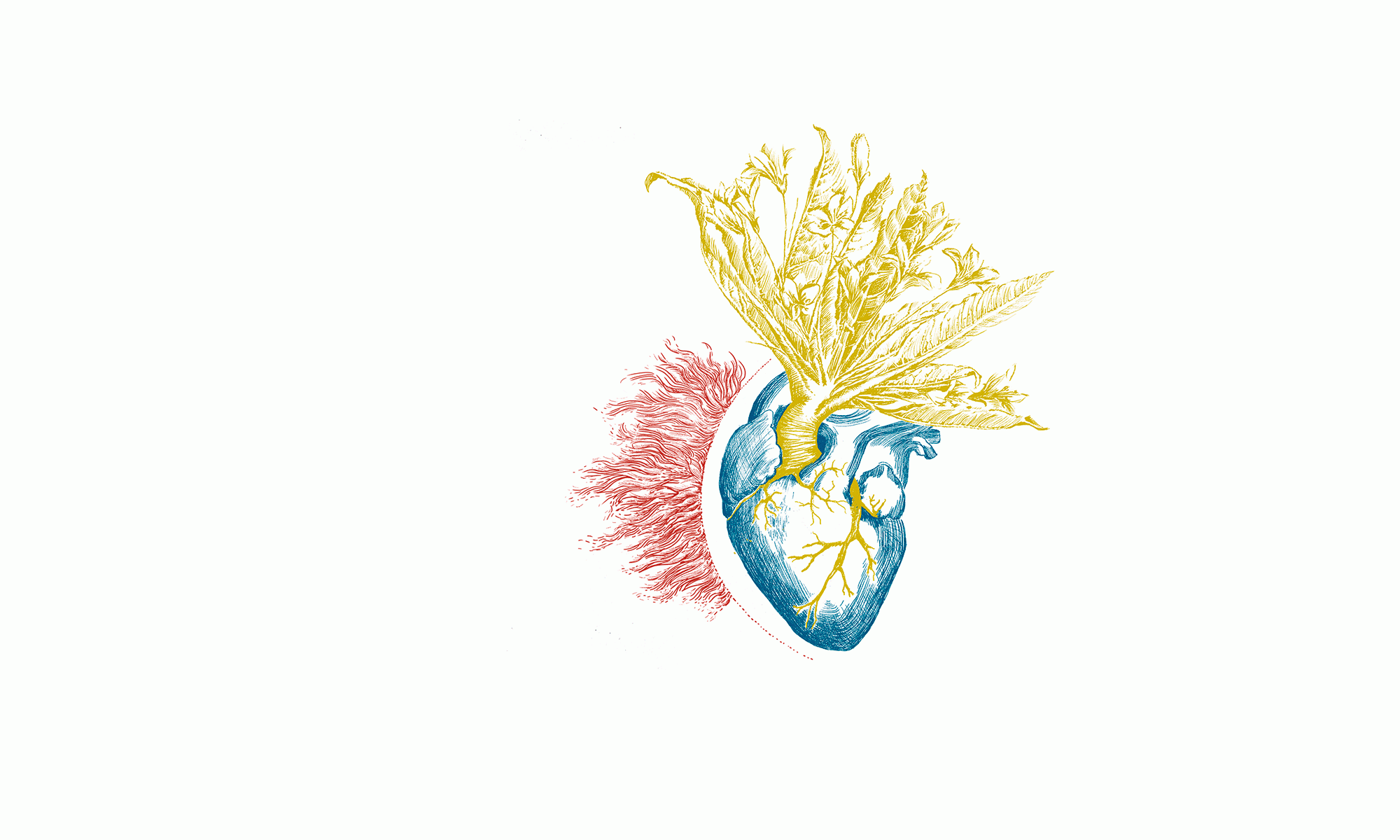Notes to the program:
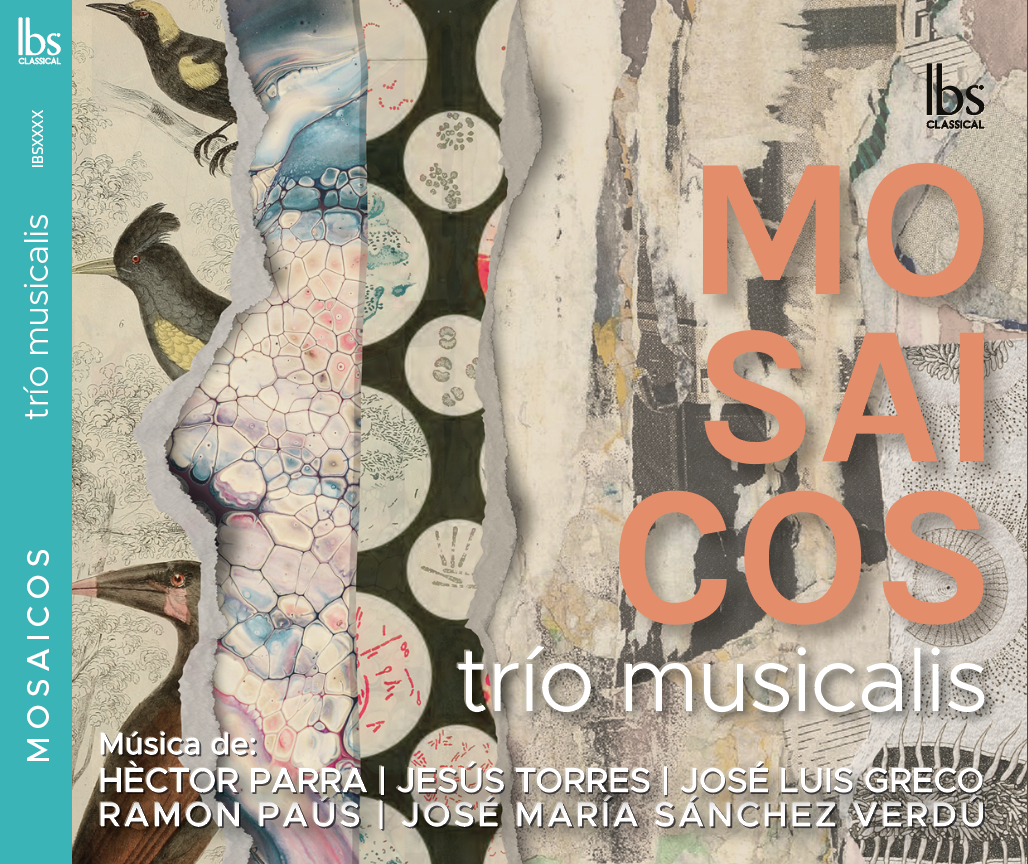
The Musicalis Trio was formed in 2008 within the ambit of the Spanish National Orchestra. During the past 15 years of shared work and intensive concert activity, its three members (Eduardo Raimundo, clarinet and bass clarinet; Mario Pérez, violin; Francisco Escoda, piano) have forged the group’s identity, whose fundamental purpose is “to re-create the chamber music of history’s great composers.” In fact, on their first CD, Contrasts, they imparted their personal vision of five key works for the atypical combination of clarinet, violin and piano, all of them written in the first decades of the 20th century: the suite from Stravinsky’s L’Histoire du soldat (1919), the “Adagio” from Alban Berg’s Chamber Concerto (1925), Khachaturian’s Trio for Clarinet, Violin and Piano (1932), Milhaud’s Suite for Clarinet, Violin and Piano (1936) and Bartok’s Contrasts (1938).
On this new album, Mosaic, the Musicalis Trio takes a step further and makes the triple commitment to that which is part of its foundational DNA: the augmenting of the repertoire for its formation, the music composed in our time, and the music of Spain. Throughout its trajectory the Musicalis Trio has commissioned and premiered close to thirty works by the most important Spanish composers of today, living in Spain or abroad, and in many cases these works are dedicated to the trio. Here we have a collection of five 21st century scores written expressly for the Musicalis Trio. Four of them, those by Hèctor Parra, José Luis Greco, Ramón Paús and José María Sánchez-Verdú, are written for bass clarinet, violin and piano, whereas the work for B♭ clarinet, violin and piano is signed by Jesús Torres. On the one hand, this is clearly a boon to the growth of the repertoire for an instrument as beguiling, versatile and still relatively unexploited as the bass clarinet. But the five creations, which take advantage of all the characteristics and idiosyncrasies of the Musicalis Trio, also reveal the group’s desire to showcase an extended range of styles and aesthetic approaches. This is evident as well in the heterogeneous designs and illustrations that the multifaceted artist Ion Fernández de las Heras has made for each piece.
One of the constants in the catalogue of the Catalan composer Hèctor Parra (Barcelona, 1976) is the search for inspiration in extra-musical disciplines, from relative physics to the visual arts. More specifically, an interest in painting shows itself repeatedly in his work, especially in its early period. In fact, Parra himself studied with the painter Francesc Miñarro as an adolescent. In his music one can sense the influence of the late Cézanne’s use of colour, but also references to Tàpies and Velázquez. On the other hand, Parra describes himself as “a very lyrical composer, very Mediterranean, even when I write for instruments other than the voice. I’m attracted to inflections, the tensions pertaining to the human physiology, our breathing, speaking, singing. The sound architectures with which I most closely identify are those that resonate with our own movements, our own breathing.” (El Cultural, 2016)

Both aspects of his musical plasticity come together in Chiffres et constellations amoureux d’une femme (d’après la XXe constellation de Joan Miró), a work dedicated to the Musicalis Trio and which is part of an ambitious compositional project inspired by the Constellations (1949-1941) of the painter Joan Miró, whom Parra has admired since childhood and with whom he has in common an important connection to France: both artists lived and created in Paris from the age of 26. This hybrid poetic musical cycle, conceived during the lockdown of 2020, refers to the series of 23 small format paintings on paper with which Miró tried to mitigate the suffering resulting from his forced exile from Spain at the end of 1936 and his return in 1940 due to WWII. We are before a morphology of signs with stars, birds and women which remind us of cosmic spaces by means of the Barcelona painter’s vigorous use of colour. According to Parra, the idea is to “re-experience, by means of listening, the creative pulse which motivated Joan Miró.”
Completed in Paris in January 2021, Hèctor Parra’s Cifras y constelaciones amorosas de una mujer (Amorous Figures and Constellations of a Woman) surprises us by its lyricism and its timbral experimentation: the use of different objects to produce unexpected sounds from the piano (aluminium ruler, bicycle pump, adhesive rubber of the Blu-Tak or Patafix type), as well as precise extended performance techniques: unusual bowings and the use of the hands to strike the violin, and the play of breath and sound production on the clarinet. The energy is maintained during the whole work thanks to the spirited and continuous back and forth of, to a certain extent, contrasting characters, developed in successive passages. We go from a contemplative stillness to hysteria by means of the interaction between the three instruments and two important solo passages for violin and bass clarinet. According to the composer:
“In this trio, violin, bass clarinet and piano weave a ‘spider’s web’ of unexpected organic sounds and radical spectral transformations that seeks out the form that seems to emanate from the fabulous micro-universe suggested by Miró’s constellation. It attempts an exploration of the profundities of our interior world: intimate shadows and monsters in vibration with the often threatening and deformed human figures and animals as was so elegantly rendered by Miró. My hope is to provide a sonic conduit to this imaginary and atavistic dimension, full of signs and vibrant organic forms, colour and curvilinear expression.”
In the case of Jesús Torres (Zaragoza, 1965), winner of the National Music Prize in 2012, literature, as a creative stimulus, has impregnated a large part of his work. Torres, a declared lover of Spanish mysticism, has been inspired by and has set to music very different kinds of texts: a high percentage of those are by Vicente Aleixandre, but others are by Jorge Manrique, Francisco de Quevedo, Luis de Góngora, Lope de Vega, Santa Teresa de Jesús, San Juan de la Cruz, Hans Christian Anderson, Rubén Darío, Juan Ramón Jiménez, Max Aub, Federic García Lorca, Juan Eduardo Cirlot, León Felipe, Miguel Hernández, Leopoldo Panero, Antonio Carvajal, Alejandro Duque. He has also used texts from the Bible.
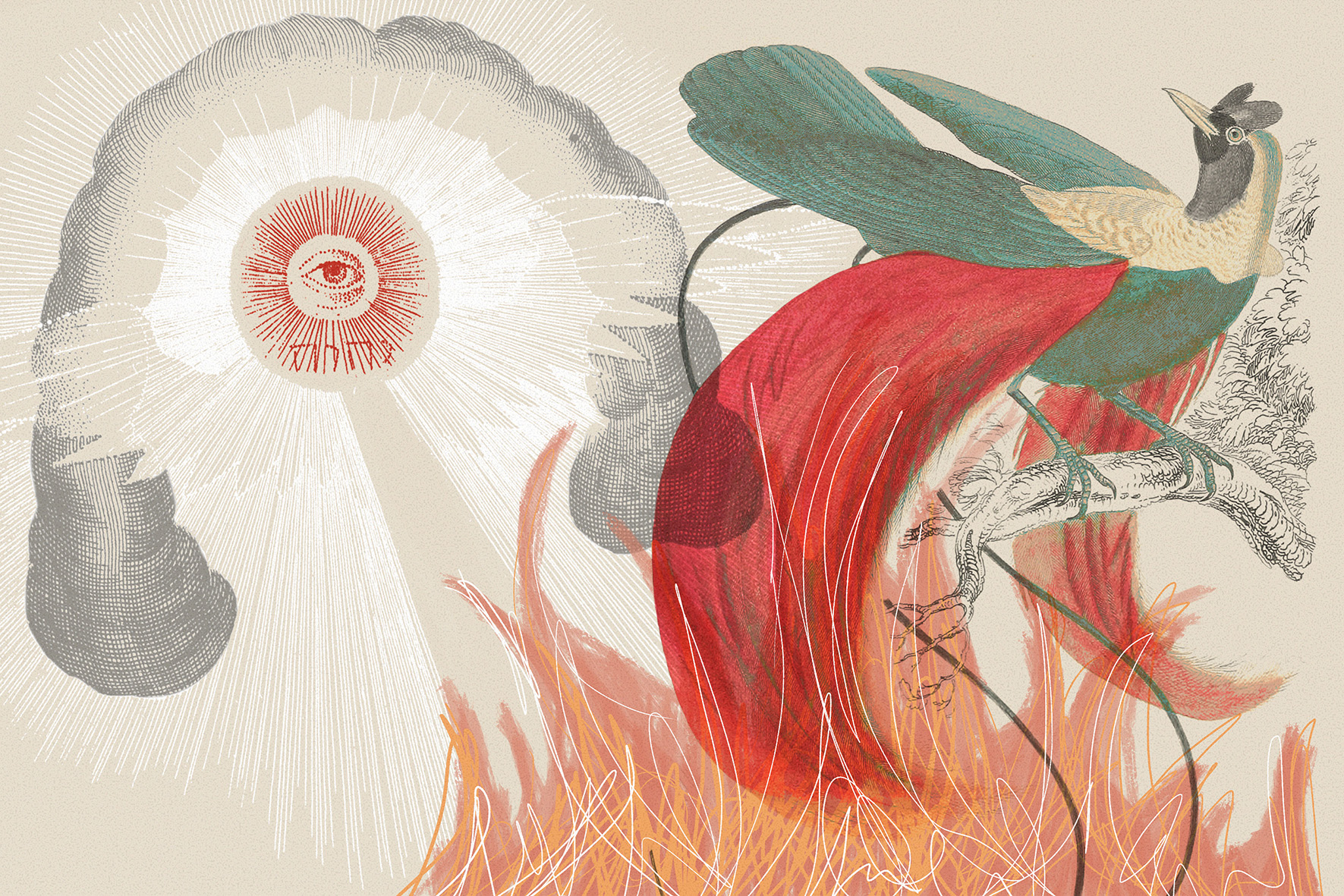
Fulgor (Brilliance) was written in 2017 and commissioned by the INAEM (National Institute for the Performing Arts and Music) to celebrate the 10th anniversary of the Musicalis Trio, dedicatees of the work who premiered it the 4th of February 2018 in Madrid’s National Auditorium. In this case, the following verses of José Ángel Valente’s book El fulgor (1983-1984), very much influenced by syncretic mysticism, motivated the composer to write this piece:
“And everything that exists in this hour
of absolute brilliance
is burnt, blazes
with you, flesh,
in the flaming mouth of the night.”
Valente’s poetic essentialism finds its musical counterpart in Torres’ score thanks to the lyricism present in each of the three instruments’ parts. Each appears consecutively as protagonist, counterpoint and accompaniment in a play of tonal equilibrium. The deepening of the melodic parameter, which intensifies the musical flow, is one of the expressive trademarks of the composer from Aragón. Another characteristic is the use of short and easily remembered motifs, as we can see in the brief motivic cells with which he builds a transparent and straightforward narrative. The essence of his creative language, especially in recent years, is firmly rooted in Western tradition. His scores incorporate and renew strategies used since the Middle Ages up to the avant-garde of the second half of the 20th century, and are based on a profound and meticulous analytical knowledge of the history of music. Torres says of his work Fulgor:
“The work is constructed in a single movement and divided into a series of episodes characterized by a tireless rhythmic pulsation. To this is added a discourse in which harmonic transparency is primary, together with the use of certain materials I’m very fond of for the clarinet: quarter-tones as an ornamental element and consonant multiphonics in pianissimo.”
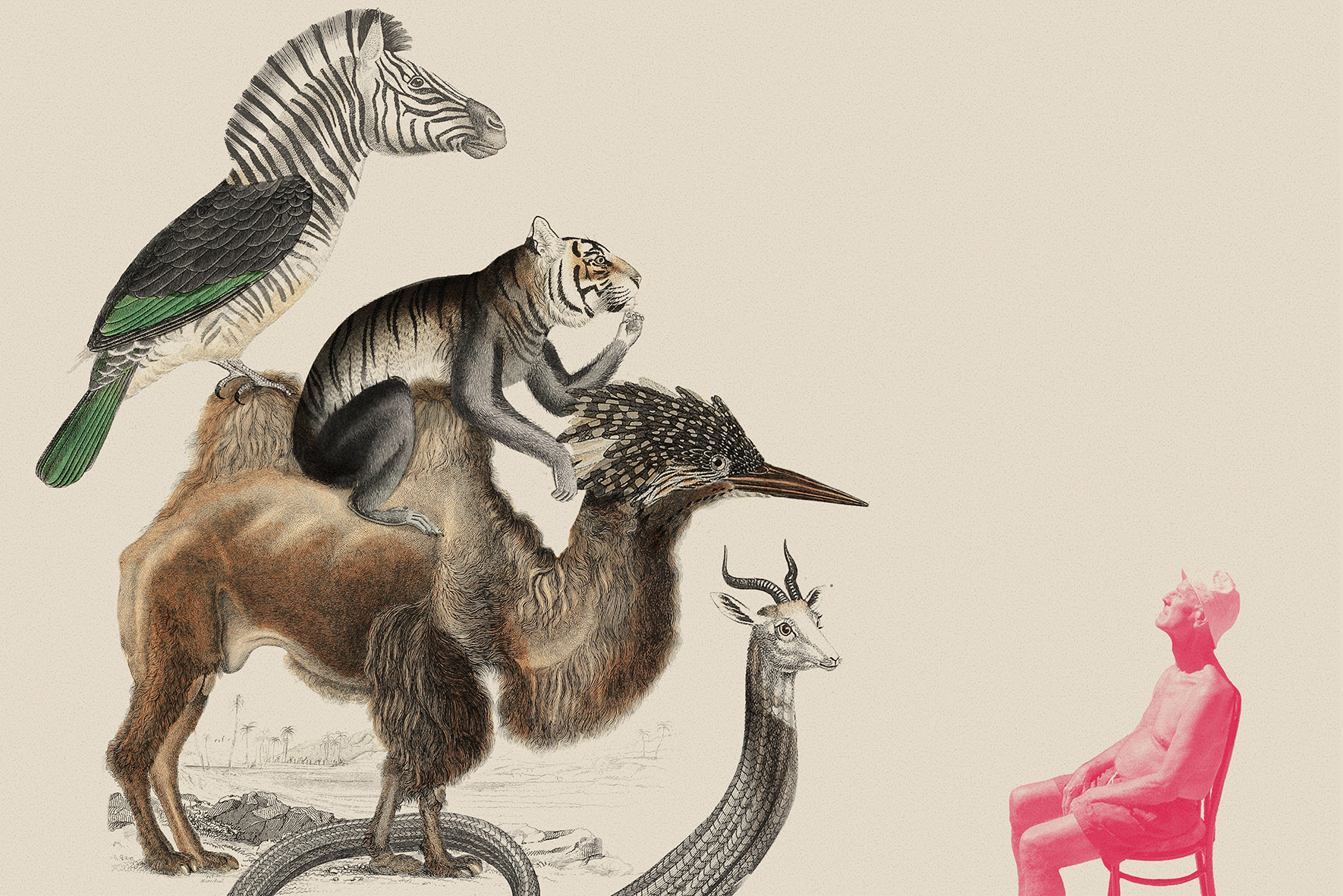
The composer José Luis Greco (New York, 1953) spent the first years of his professional life in the worlds of Rock and Jazz music, as an actor in theatre and television, and as a dancer. After North America and later Amsterdam in The Netherlands, he settled in Madrid in 1994, focussing on the creation of concert works. The eclecticism (very often present in artists from the United States) and the independence we see in his trajectory are expressed in his manner of composing: free and unprejudiced. The result is a rich, dynamic and multifaceted style in which we can identify various influences, from Western traditions to those of other cultures. Between verity and irony, Greco himself provides these words about his Big Fun:
“With Big Fun we learn a new language – listening, imitating, repeating – in the same way that earlier we learned our mother tongue. With Big Fun we gain the confidence to use the new language fluently. Beginning with an elementary vocabulary, Big Fun reveals the language by means of various materials which are at the same time familiar and attractive to us: mathematics, the measuring and relating of time and space, syntax, expression, etc. Games, images, frameworks and challenges facilitate the assimilation of the essential values of this new language. Creative thought, the overcoming of obstacles, the ability to communicate and collaborate, all the values to which Big Fun aspires, constitute the fundamentals for acquiring the necessary abilities which will help us face the challenges of our time.”
In this work, dedicated to and premiered by the Musicalis Trio on the 4th of February 2018, we find a succession of contrasting sections which lead us through an extensive architecture, poetic and impassioned, in which the past and the present come together. It all begins with the opening “Swinging” in which an ostinato in the left hand of the piano is combined with non-conventional sounds in the violin and bass clarinet (for example, respectively, col legno and key slaps), which contribute to the motoric discourse. From there on, the various fermatas and measured silences mark the transitions to very different ways of presenting the generating materials: by the virtuosic turbulence of all three instruments in jazz-like fashion, by the static timbral experimentation which creates dreamlike atmospheres in the “Ominous” section, or in the ironic “Driving” where clear echoes of the music of Debussy and Messiaen can be heard. It is also of note that Big Fun was the first step towards the composing of the concerto for bass clarinet and orchestra which Greco wrote commissioned by Eduardo Raimundo.
“Almost a hundred years ago the Schrödinger Equation and Heisenberg’s Principle of Uncertainty upended the classical mechanics of Newton, fostering the advent of quantum physics, with its particles and anti-particles… All of this leads to, among other matters, the possibility that many beings identical to us exist on other space-time planes. Our Quantum Guest, staying in his usual hotel, congratulates himself for the fact that we are capable of at least glimpsing this.” These are the aesthetic premises of Ramón Paús (Castellón, 1959), a point of narrative departure, almost cinematographic, which are fundamental to his compositional work.
Paús has realized his musical activities in very diverse contexts, from soundtracks and music for theatre and ballet to concert works. This creative polyvalence, transversality and versatility are very palpably manifested in his scores thanks to the use of resources typical of other genres. In relation to the project Mosaicos, it is important to note that in 2018 Eduardo Raimundo premiered his Concerto No. 1 for Bass Clarinet and Orchestra “De las ciudades ajenas” (“Of Strange Cities”) with the Spanish National Orchestra. That is to say, Paús is particularly fond of the bass clarinet.
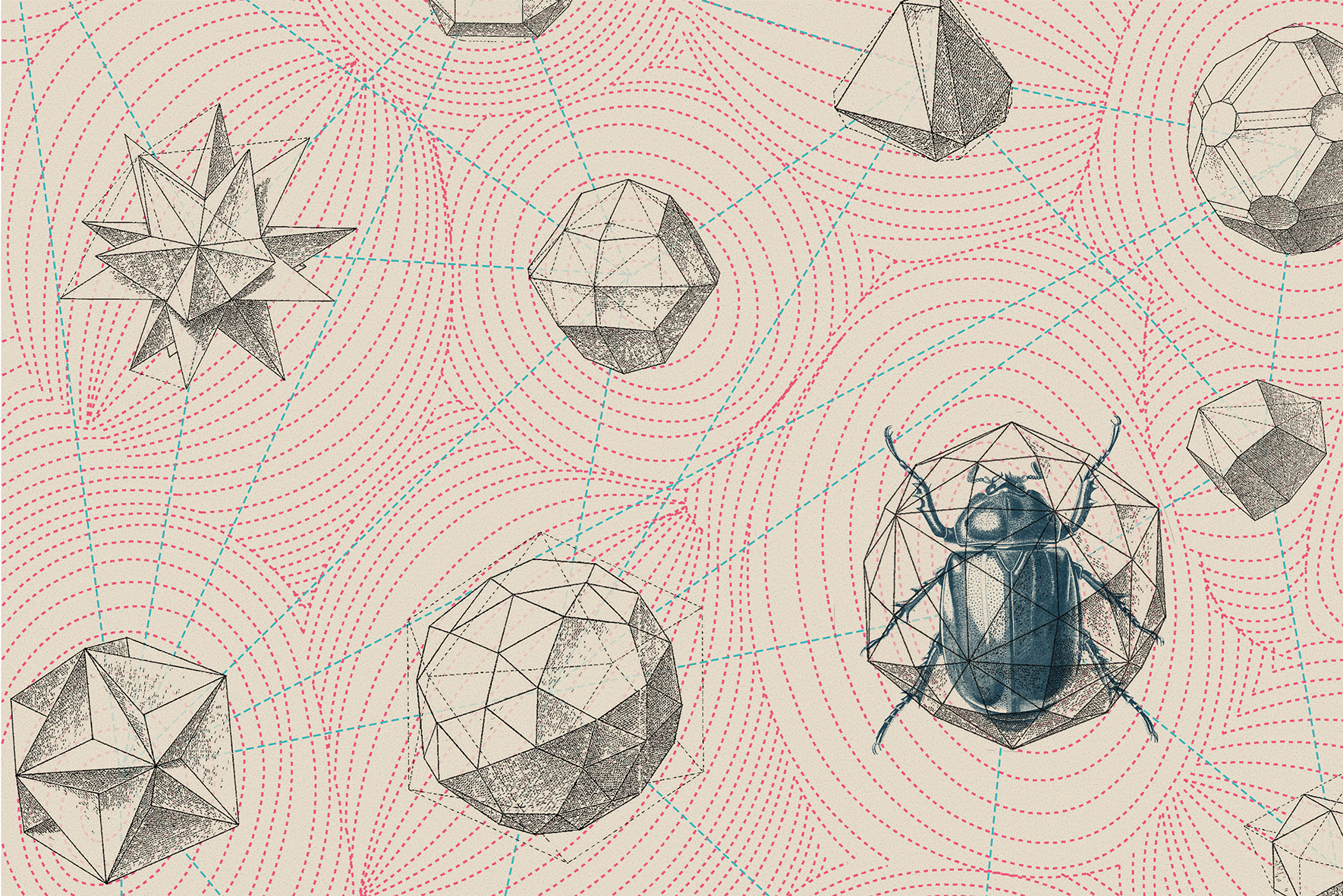
El Huésped Cuántico (The Quantum Guest) is dedicated to the Musicalis Trio and was completed in the autumn of 2020. Its mystical opening “Largo”, with its piano clusters, furnishes the nocturnal calm in which the entire work will unfold: harmony and resonance are the protagonists. In the following “Allegro”, according to the composer: “It’s as if Dave Brubeck had dictated the piano groove in 5/4, with a rhythm constant in its thrust and subtle in its balance. In its shadow the possibilities and combinations of violin and bass clarinet are almost limitless. We’ll see couplings of the clarinet and the left hand of the piano, a duel in the heights between the violin and the bass clarinet, and at the end of the passage some solos for both at velocities that only the chosen can travel.” In the “Andante” we discover Messiaenesque birds in the clarinet and the ethereal arpeggios of the piano which frame the sweet, legato and expressive lines of the violin. In the final section the waves of septuplets in the piano conclude the work with an agitation “both uncertain and delicate in equal measure.”
We find the album’s highest level of timbral experimentation in Luz negra II (De máquina oscura) (Black Light II (Of a dark machine) which José María Sánchez-Verdú (Cádiz, 1968) wrote in 2021. The dialogue between the remote past and the present has always been very present in the imagination of the composer and conductor from the city of Algeciras and recipient of the National Music Prize 2003. Intertextuality is one of the pillars on which his creations rest: in the relation his work has with Western music of the past, especially the Middle Ages and the Renaissance, as well as his research into sonorities from other cultures, above all the Japanese and the Arabic. Sánchez-Verdú conceives music as a form of knowledge, but he also plays with the perceptive experience of the listener and its limits, as in, for example, Luz negra II (De máquina oscura).
Dedicated to the poet Francisco Deco and the Musicalis Trio, who premiered the work in Bilbao the 18th of October 2021, it is part of a series of chamber works which are reflections on the concept of “black light” from different poetic points of view: Luz negra I for guitar and accordion (2019) and Luz negra III (Homenaje a Chillida) for txistu (a high-pitched Basque wind instrument), accordion and percussion (2021). Sánchez-Verdu’s language transcends the common zones of instrumental sounds and leads us into landscapes of different colours which can disorient us: we leave behind familiar territories as far as sound production and ways of listening are concerned. As the composer himself declares:
“The essence of these pieces is in the vibrations, the frequencies presented at different velocities, as if instead of sounds (frequencies), work based precisely on light was being done, on the waves on which light travels through space. So-called black light (with its own frequency conditions as well) makes visible, in complete darkness, objects according to their surface. In this sense it has a bearing on the second piece of the cycle.”
Mosaicos is a cross-section of today’s musical creation in our country. The Musicalis Trio is contributing to the ongoing configuration of our artistic history, helping generate a new and valuable repertoire for the instrumental combination of clarinet (especially the bass clarinet), violin and piano. On this map of Spanish stylistic diversity at the commencement of the 21st century we travel from the sonic exaltation of Parra to the timbral speculation of Sánchez-Verdú, passing on the way the luminosity of Torres, the eclecticism
of Greco and the lyricism of Paús. The added value of the members of the Musicalis Trio starts with their rigorous and enthusiastic interpretation of this music, demonstrating their exceptional capacity of adaptation to each language.
